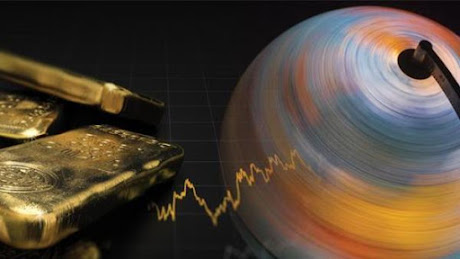New demand for gold in 2020!
Gold-backed ETFs and similar products (gold ETFs) recorded their tenth consecutive month of net inflows during September, matching equivalent stretches in 2008 and 2016. Gold ETF holdings increased by 68.1 tonnes (t) (US$4.6bn) or 2.0% of assets under management (AUM) despite gold’s worst monthly price performance since November 2016.
Global net inflows of 1,003t (US$55.7bn) in 2020 have led overall gold investment demand and taken the gold ETF holdings universe to a fresh new all-time high of 3,880t and US$235bn in AUM.
In a Monthly regional overview, gold was one of several major assets, including stocks and broad-based commodities, that started the quarter strongly, reversed course in September, but closed the quarter higher. This was mirrored by a stronger US dollar that finished the quarter nearly 4% lower.
North American funds led global inflows once again, up 34.6t (US$2.2bn, 1.8% AUM). After seeing outflows in August, European funds added 26.0t (US$1.9bn, 2.0%) in September.
Asian funds added 6.8t (US$432mn, 5.9% AUM) as two new funds launched in China for a second straight month, bringing the total number of new funds in the region to seven this year.
Safe-haven demand and strong y-t-d returns in the domestic gold price fostered Indian fund inflows during the month. Finally, funds listed in other regions experienced small inflows of 0.6t (US$23mn, 0.6% AUM).
Q3 inflows remained strong. Gold ETF holdings grew 7% during the third quarter, adding 273t or US$16.4bn in assets as the price of gold finished nearly 7% higher during the same period.
North American funds remained the primary recipients of inflows. However, inflows in Asia stand out, as the region grew holdings by 17% and four new funds listed in China. Assets in Europe and other regions grew by 3% and 9% respectively.
Liquidity and positioning suggest increased strategic investment. Gold’s 3.6% September pullback was likely tactical in nature. Gold rallied sharply (22%) between April and July, reaching an all-time high in early August.
When prices move this quickly there is often a subsequent pause or pullback in the price related to profit-taking or positioning. The recent Commitment of Traders (COT) report for gold COMEX futures of 759t (US$46bn) confirms reduced net long positioning.
While still above the 2020 average of US$189bn, net long positioning has fallen nearly 40% since the February 2020 all-time highs of 1,209t (US$63bn). Volumes also fell from US$228bn in August to US$199bn in September. Notably, global gold ETF volumes fell to US$3.2bn from US$5.2bn the previous month. Despite the weaker prices, positioning and volumes, investment demand via gold ETFs increased, suggesting continued long-term strategic positioning.
The higher inflation allowance policy is gaining momentum in multiple regions! Last month, we noted that the US Federal Reserve would no longer pre-emptively increase rates to cool higher inflation, implying that rates could remain near zero for many years, and that this monetary policy philosophy could trickle into other regions, assuring negative global real rates for the foreseeable future.
This appears to have been corroborated following the ECB’s announcement that it may consider allowing inflation to run higher for longer than usual. Subsequently, the improved opportunity cost of gold has helped investment demand so far in 2020, outweighing decreasing demand in the jewellery and central banks’ spaces.
The fourth quarter could be volatile:
There are numerous catalysts for market volatility in the fourth quarter, 1: US - Market analysts believe there is a good chance the US Presidential election will be contested and unresolved for some time after election day.
Moreover, contentious dynamics around the stimulus bill and the Supreme Court Justice nomination are already whipsawing markets, 2: Europe - a no-deal Brexit scenario is possible and could disrupt trade in the region
3: Global - COVID-19 cases are on the rise as we move into the fall, with President Trump the most recent infected world leader.
On a positive note, economic indicators are improving in China, and during the holiday season there could be an uptick in consumer gold purchases as China single-handedly accounts for over 20% of annual gold demand. Also, the potential for a COVID-19 vaccine emerging during the quarter has gained momentum.







Comments
Post a Comment